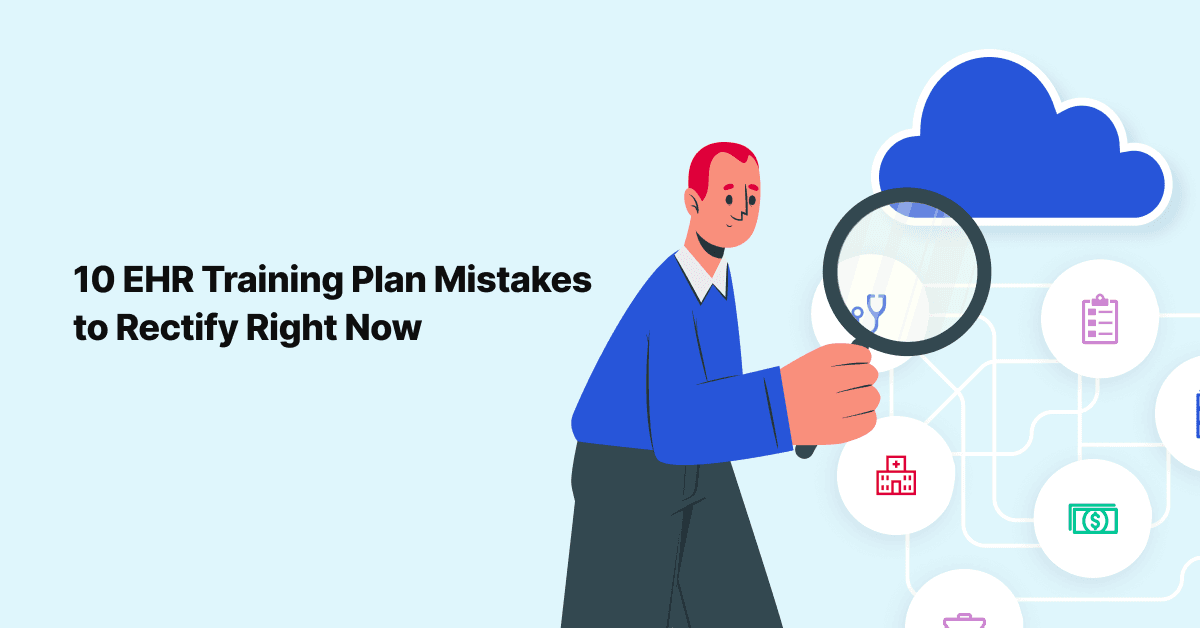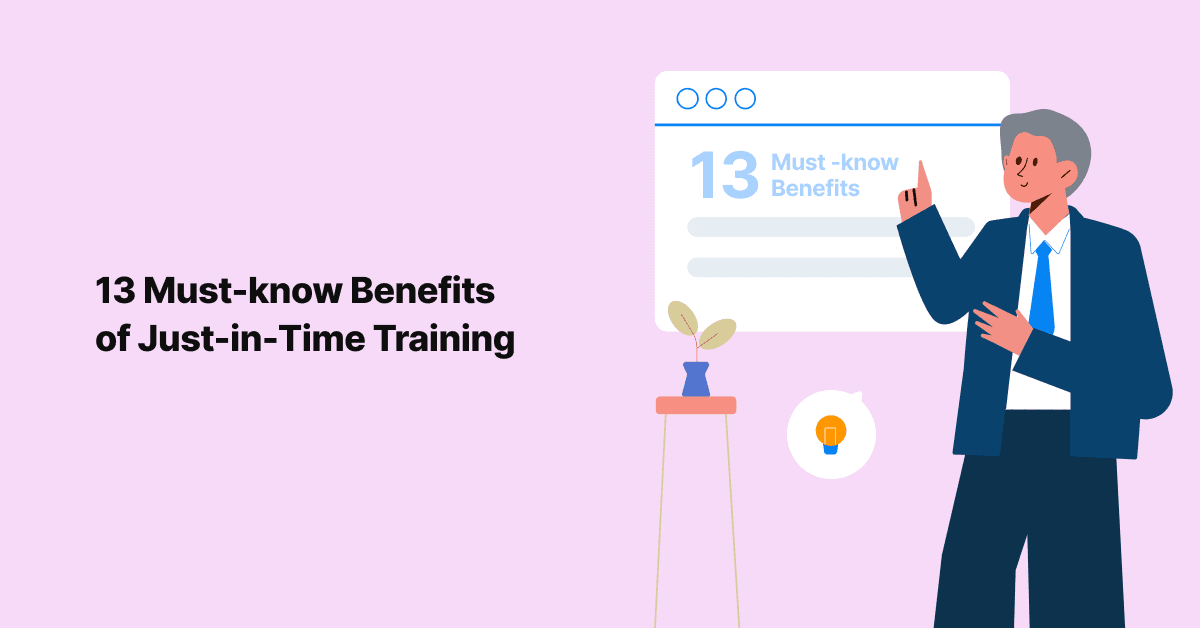
Not Hours, But Now You Can Create Tip Sheets in Minutes
Dealing with the creation of tip sheets can be quite daunting, no doubt about it.
A survey by WellSky in 2022 …

If your EHR training plan has stood the test of time, it's time for a check-up.
Let's scrutinize its performance, spot any hiccups, and fine-tune it for peak efficiency. Join us as we uncover ten common mistakes that may have slipped into your EHR training and explore actionable solutions.
Imagine trying to bake a cake without knowing what flavor your friends like. That's what happens when you forget to find out what your healthcare staff really needs before diving into EHR training. It's like throwing ingredients into the bowl and hoping for the best, but you might end up with a cake that nobody wants to eat.
Picture this: You walk into a shoe store, and there's only one shoe size available. It doesn't matter if you have big feet or tiny ones – everyone gets the same shoe. Sounds ridiculous, right? Well, that's what happens when you fall into the one-size-fits-all trap with your EHR training. Chaos ensues, frustration builds, and suddenly, your workplace feels like a mismatched circus act.
But fear not! The solution is simpler than finding the right-sized shoe.
Skimping on resources is like finding yourself stranded in a learning desert. It's attempting to build a sandcastle with one bucket of sand or cook a gourmet meal with only salt in your pantry. The result? A barren landscape leaves your staff thirsty for the knowledge they need.
But fear not! The remedy is not just a drop in the bucket – it's a cascade of learning opportunities.
Neglecting to integrate EHR training seamlessly into your existing workflows is akin to trying to solve a puzzle with missing pieces. It results in a disjointed workflow where the EHR system feels like an awkward addition rather than a smooth part of the daily routine. This lack of integration leads to confusion and inefficiency, much like having a GPS that knows the destination but struggles to understand the journey.
Neglecting to involve healthcare professionals in the planning and decision-making processes of your EHR training plan is a significant mistake. It creates a disconnect between the training provided and the actual needs and expectations of users, leading to dissatisfaction and resistance.
When users are not actively involved, the EHR training plan may miss the mark, leaving users feeling unheard and disengaged. It's essential to rectify this mistake by actively involving users in the development and decision-making stages.
Neglecting ongoing training support in your EHR training plan is akin to providing a roadmap without any road signs. It leaves users navigating the complexities of the system without guidance, resulting in frustration, inefficiency, and potential errors.
Why It Matters?
When training lacks proper evaluation, it's like sending drivers onto the road without checking if they know how to handle various scenarios. This lack of assessment can lead to a range of problems, including:
Looking to evaluate your entire EHR training plan? Use this free template.
Not having a strong communication strategy for your EHR System can be a grave mistake. It's like having a conversation in a noisy room where the important messages get lost in the chatter. Without a clear and effective communication plan, the benefits of the EHR system and its alignment with organizational goals may remain obscured.
Underestimating the importance of change management is a critical mistake that can lead to a reservoir of resistance within your organization. It's akin to expecting a river to flow smoothly without considering the rocks and obstacles in its path. Without a robust change management strategy, concerns may fester, and the transition to the EHR system may encounter unnecessary turbulence.
Ignoring regulatory compliance is like neglecting to build a fence around a precious garden, leaving it vulnerable to external threats. It jeopardizes patient information security and legal integrity, posing significant risks to both the organization and its stakeholders. Failing to explicitly address regulatory requirements in the training plan can lead to unintentional violations and legal consequences.
In conclusion, by acknowledging these common pitfalls and implementing these practical corrections, your existing EHR training plan can undergo a positive transformation. Remember, ongoing improvement is a key component of successful EHR implementation. Adaptability, user engagement, and a commitment to addressing user needs will contribute to a more seamless and effective training program.
Join over 3,200 subscribers and keep up-to-date with the latest innovations & best practices in Healthcare IT.

Dealing with the creation of tip sheets can be quite daunting, no doubt about it.
A survey by WellSky in 2022 …

Imagine: You're cooking a delicious meal, and everything's humming along. Suddenly, one dish needs a pinch of …

As a CIO, if you had to get your clinicians’ feedback on the newest EHR implemented or the most recent upgrade …